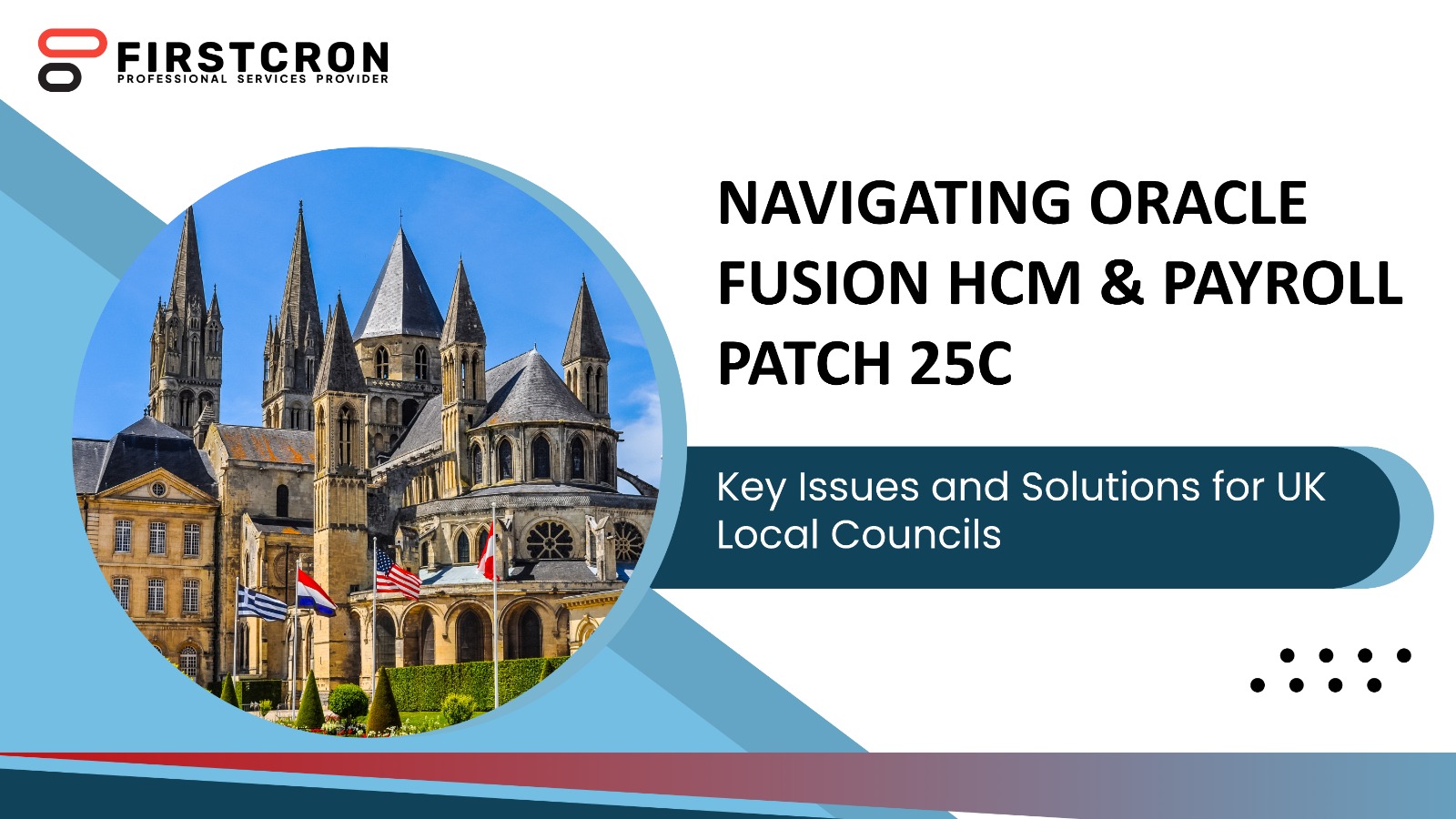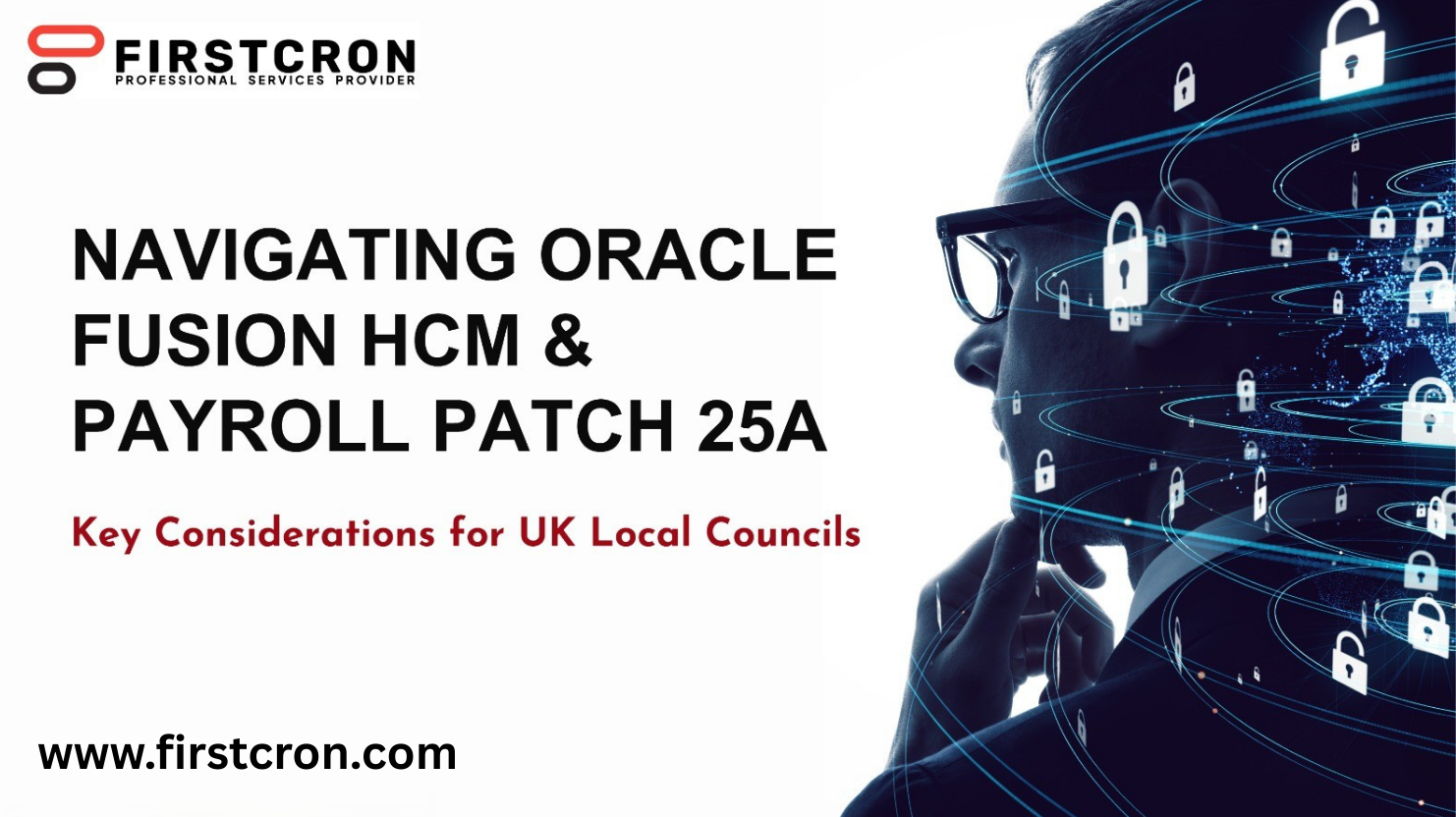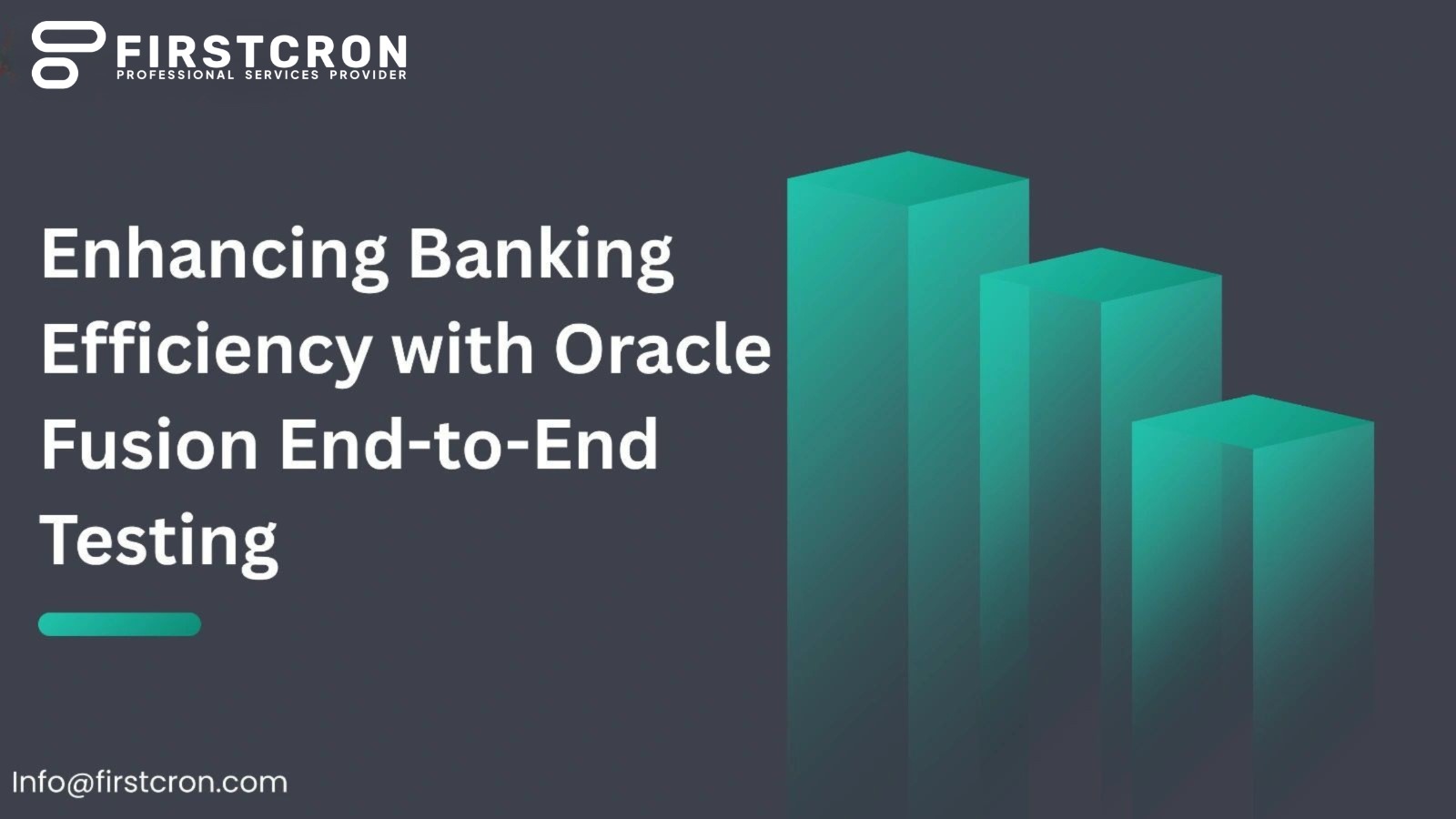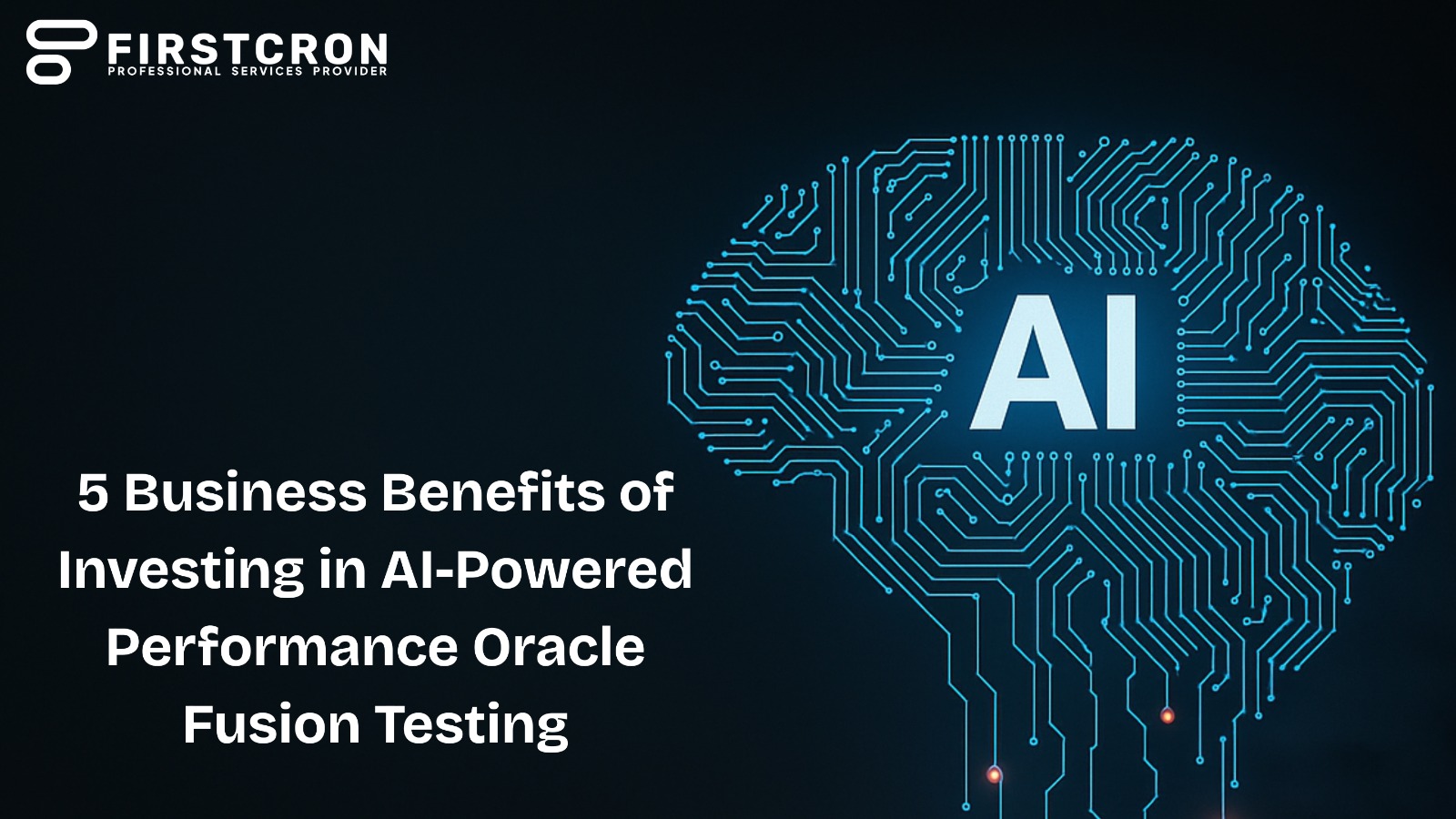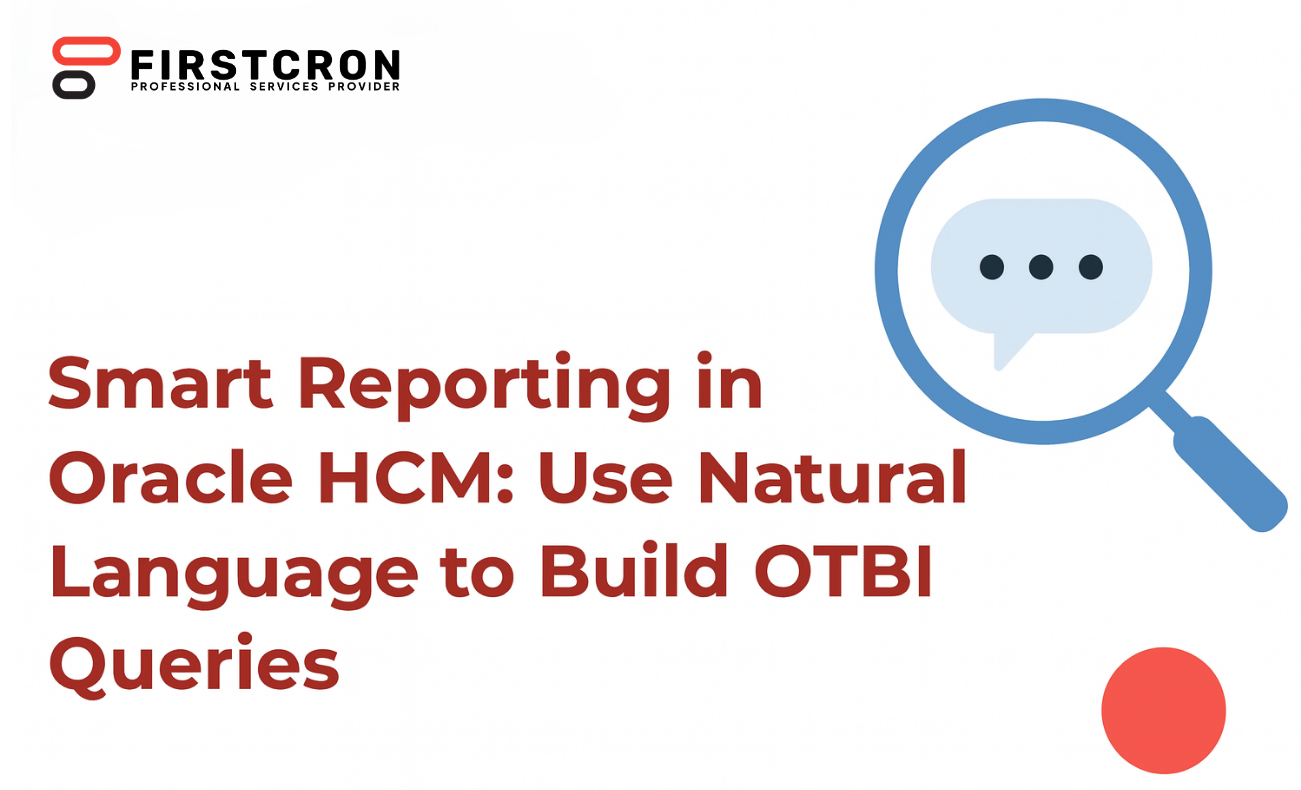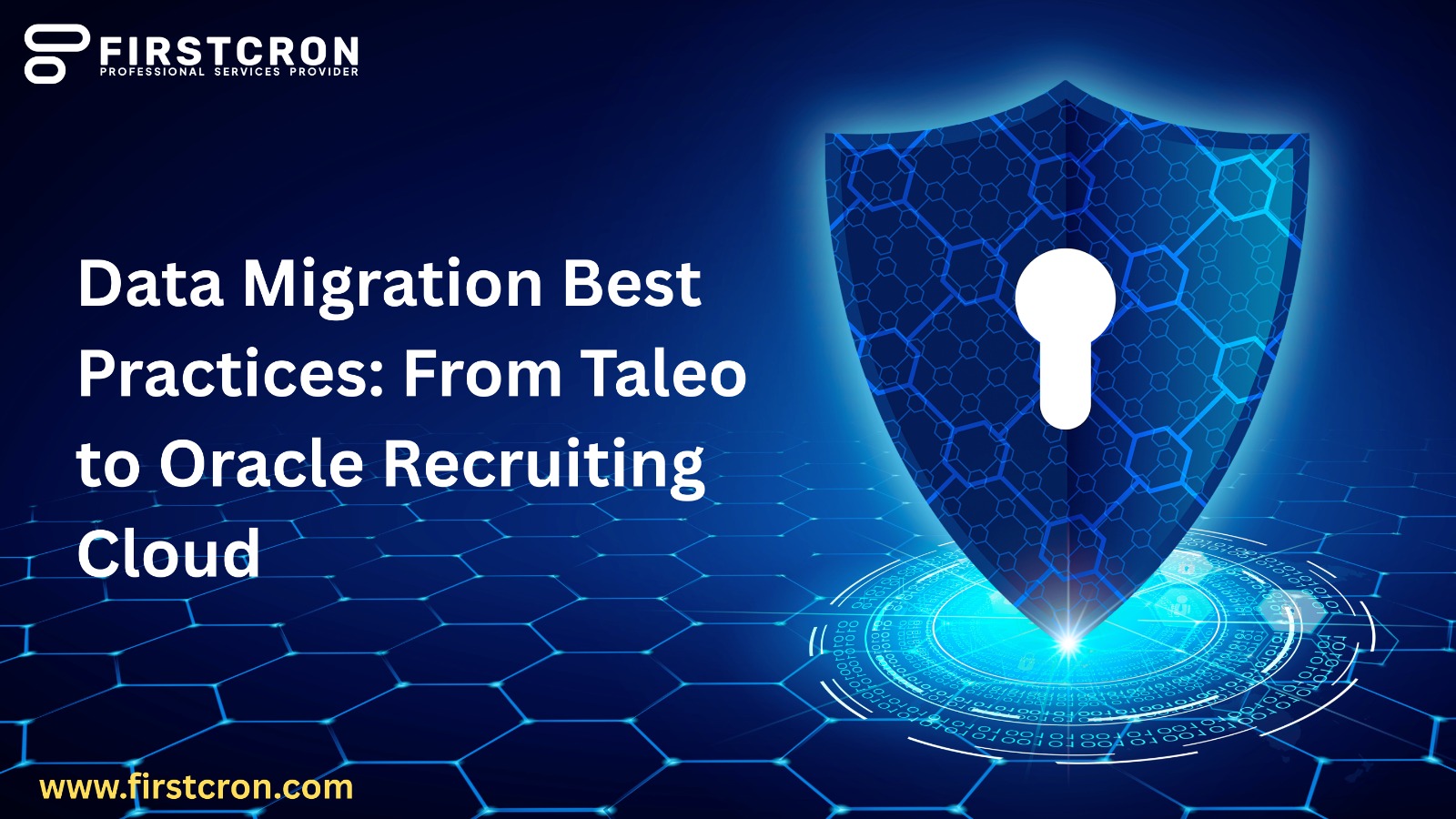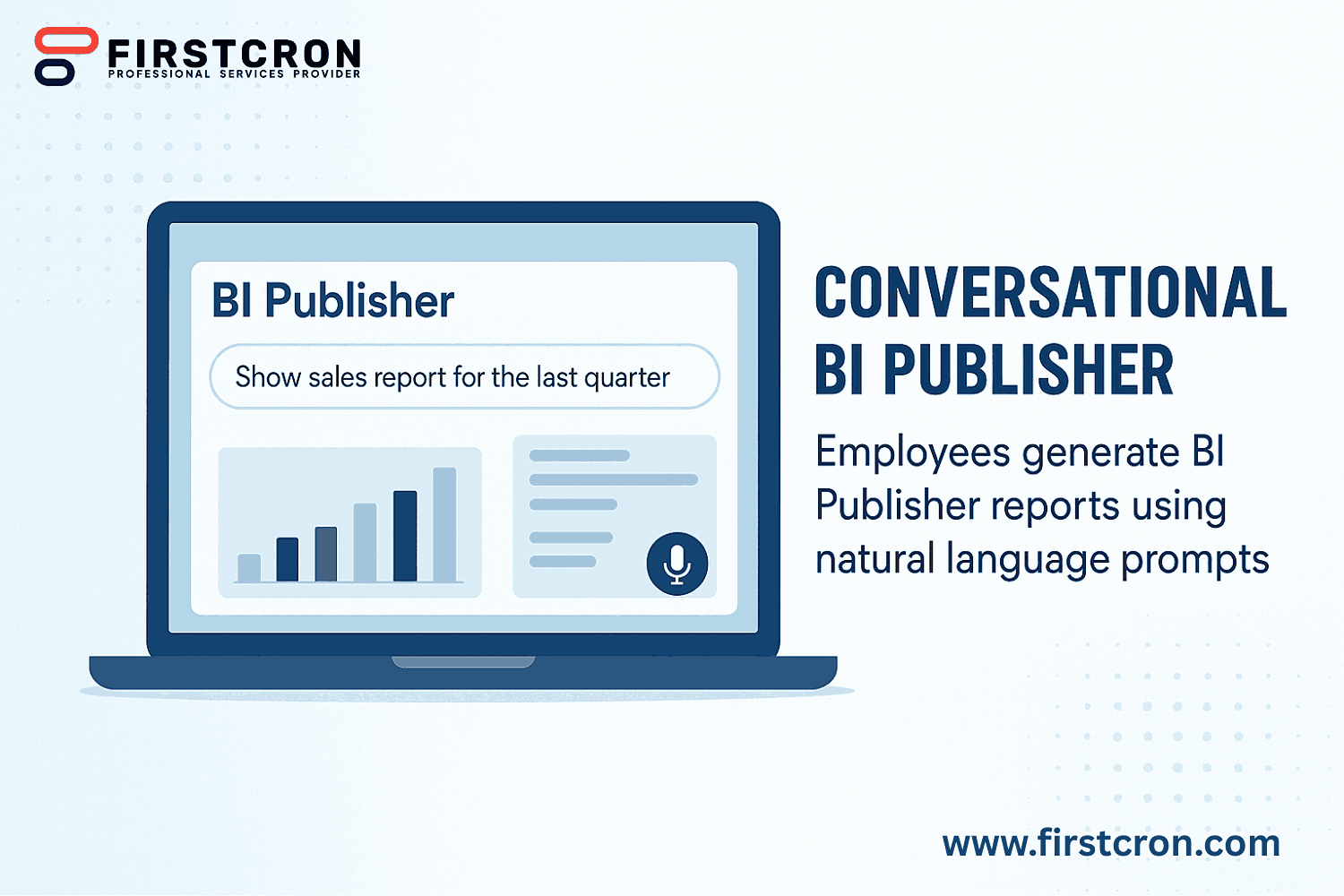
In today’s digital landscape, businesses are generating more data than ever before. The challenge no longer lies in collecting data but in making it accessible, understandable, and actionable for employees across all levels of an organization. Traditional reporting systems, while powerful, have often been intimidating to non-technical users who lack training in SQL or XML. This bottleneck has slowed down decision-making and created dependencies on IT teams. Conversational BI Publisher represents a breakthrough solution to this challenge, allowing employees to generate professional-grade reports using nothing more than natural language prompts.
In this blog we’ll cover
- Understanding Conversational BI Publisher
- Why Natural Language Matters In Reporting
- How It Works Behind The Scenes
- Benefits Across The Enterprise
- Conversational Exploration And Context Awareness
- Bridging Data Silos
- Encouraging A Data-Driven Culture
- Addressing Challenges And Limitations
- Future Possibilities For Conversational BI
- Conclusion: A Paradigm Shift In Reporting
Understanding Conversational BI Publisher
Conversational BI Publisher is an evolution of Oracle’s BI Publisher framework, enhanced with natural language processing capabilities. Traditionally, BI Publisher required users to design data models, templates, and queries, which often demanded technical expertise. With conversational capabilities, employees can bypass these steps entirely. A simple question such as “What were the top-performing products last quarter?” can instantly trigger a refined query and produce a formatted report. This transformation turns a technical task into a natural, dialogue-driven interaction.
Why Natural Language Matters In Reporting
The power of natural language lies in its universality. Every employee, whether a finance manager, HR officer, or supply chain analyst, already knows how to ask questions in plain language. By meeting employees where they are—speaking the language they already use—Conversational BI Publisher removes intimidation and lowers barriers to entry. It enables more employees to engage directly with data, without relying on specialists. This democratization of reporting leads to faster insights, broader adoption, and a stronger data-driven culture across organizations.
How It Works Behind The Scenes
The technology underpinning Conversational BI Publisher is a blend of natural language processing, machine learning, and the established BI Publisher framework. Natural language prompts are translated into structured queries. AI-driven algorithms handle ambiguity, clarifying incomplete requests through conversational follow-ups. Once the intent is understood, BI Publisher retrieves the relevant data, applies formatting rules, and presents the results as a polished report. Importantly, role-based security ensures sensitive information remains protected, giving organizations confidence that accessibility will not compromise governance.
Benefits Across The Enterprise
The advantages of Conversational BI Publisher extend across departments and industries. In finance, leaders can instantly view expense summaries, forecasts, or variance analyses. In HR, managers can ask about attrition trends or training completion rates without waiting for IT. In supply chain operations, real-time insights into shipment delays or supplier performance can be accessed in seconds. These capabilities allow organizations to become more agile and responsive to change, which is critical in competitive environments.
Here are the core benefits organizations typically experience:
- Speed: Reports are generated instantly, reducing decision-making time from days to minutes.
- Accessibility: Employees without technical training can interact with business intelligence directly.
- Efficiency: IT teams are freed from routine report requests, enabling them to focus on strategic initiatives.
- Contextual Interaction: Follow-up questions are understood within context, allowing fluid exploration of data.
- Scalability: As adoption grows, more employees contribute to data-driven practices, multiplying organizational value.
Conversational Exploration And Context Awareness
One of the most powerful features of Conversational BI Publisher is its ability to maintain context within a conversation. If an employee asks for “sales by region” and then follows with “now break it down by product category,” the system understands the relationship between these queries. This conversational continuity mimics human dialogue, making the reporting experience intuitive and engaging. Employees can drill deeper into data without manually resetting queries, saving time and improving the flow of analysis.
Bridging Data Silos
Enterprises often face the challenge of fragmented data scattered across departments. Conversational BI Publisher acts as a unifying layer, connecting different data sources through natural language prompts. Employees no longer need to know where data resides or how to query different systems. Instead, they simply ask a question, and the system pulls together relevant insights across silos. This holistic perspective empowers executives to see the bigger picture, connecting insights from finance, operations, customer service, and beyond.
Encouraging A Data-Driven Culture
Technology alone cannot transform an organization; culture must evolve alongside it. Conversational BI Publisher plays a critical role in promoting a data-driven culture by making analytics approachable and routine. Employees begin to view data not as a technical resource owned by IT but as a shared asset available to everyone. Over time, this builds confidence in evidence-based decision-making, reducing reliance on intuition alone. The cultural shift toward inclusivity in data engagement enhances collaboration and innovation across teams.
Addressing Challenges And Limitations
Despite its potential, implementing conversational reporting is not without challenges. One key concern is ensuring accuracy in natural language interpretation, as different users may phrase requests differently. Another is maintaining governance while expanding access. Role-based security, audit trails, and careful data masking are essential to balancing openness with compliance. Additionally, systems must be designed to scale, ensuring high performance even as thousands of employees generate reports simultaneously. By anticipating these challenges, organizations can maximize the value of their conversational BI initiatives.
Future Possibilities For Conversational BI
Conversational BI Publisher is just the beginning of a broader evolution in analytics. The future may see integration with voice assistants, enabling executives to request reports hands-free during meetings. Predictive capabilities could also be embedded, where the system not only responds to queries but proactively suggests insights. For instance, it might alert a sales manager about projected shortfalls or recommend actions based on emerging trends. This proactive intelligence transforms reporting from a reactive process into a strategic partner in decision-making.
Conclusion: A Paradigm Shift In Reporting
Conversational BI Publisher represents more than just a new feature; it is a paradigm shift in how employees interact with data. By allowing natural language prompts to drive reporting, it democratizes access, accelerates decision-making, and fosters a culture where insights are accessible to all. The blend of conversational interfaces with the power of BI Publisher ensures that organizations can scale their data-driven practices without compromising quality or security. As enterprises move deeper into the digital age, Conversational BI Publisher stands as a cornerstone innovation that bridges technology and human intuition, turning everyday questions into actionable business intelligence.
For businesses ready to embrace the future of reporting and unlock the power of conversational analytics, the journey starts now. To learn more and explore how these solutions can transform your organization, visit firstcron.com.
Tags
Related Post
Navigating Oracle Fusion HCM & Payroll Patch 25C: Key Issues And Solutions For UK Local Councils
July 26th, 2025 10 min read
7 Proven Oracle Fusion Testing Principles To Guarantee Defect-Free Cloud Deployments
May 16th, 2025 15 min read
Navigating Oracle Fusion HCM & Payroll Patch 25A: Key Considerations For UK Local Councils
July 27th, 2025 10 min read
7 Reasons Why Companies Are Moving From Taleo To Oracle Recruiting Cloud
June 2nd, 2025 14 min read
How End-to-End Testing Of Oracle Fusion Enhances Operational Efficiency In Banking
May 23rd, 2025 11 min read
5 Business Benefits Of Investing In AI-Powered Performance Oracle Fusion Testing
May 5th, 2025 11 min read
WEEKEND READS
Navigating Oracle Fusion HCM & Payroll Patch 25C: Key Issues And Solutions For UK Local Councils
July 26th, 2025 10 min read
7 Proven Oracle Fusion Testing Principles To Guarantee Defect-Free Cloud Deployments
May 16th, 2025 15 min read
Navigating Oracle Fusion HCM & Payroll Patch 25A: Key Considerations For UK Local Councils
July 27th, 2025 10 min read
7 Reasons Why Companies Are Moving From Taleo To Oracle Recruiting Cloud
June 2nd, 2025 14 min read
How End-to-End Testing Of Oracle Fusion Enhances Operational Efficiency In Banking
May 23rd, 2025 11 min read
Driving Compliance And Security With Smart Testing In Oracle Fusion
June 5th, 2025 9 min read
Smart Reporting In Oracle HCM: Use Natural Language To Build OTBI Queries
August 17th, 2025 20 min read
How Cloud-Based Testing With Firstcron Can Improve Your Business
June 9th, 2025 12 min read
Data Migration Best Practices: From Taleo To Oracle Recruiting Cloud
May 28th, 2025 13 min read






